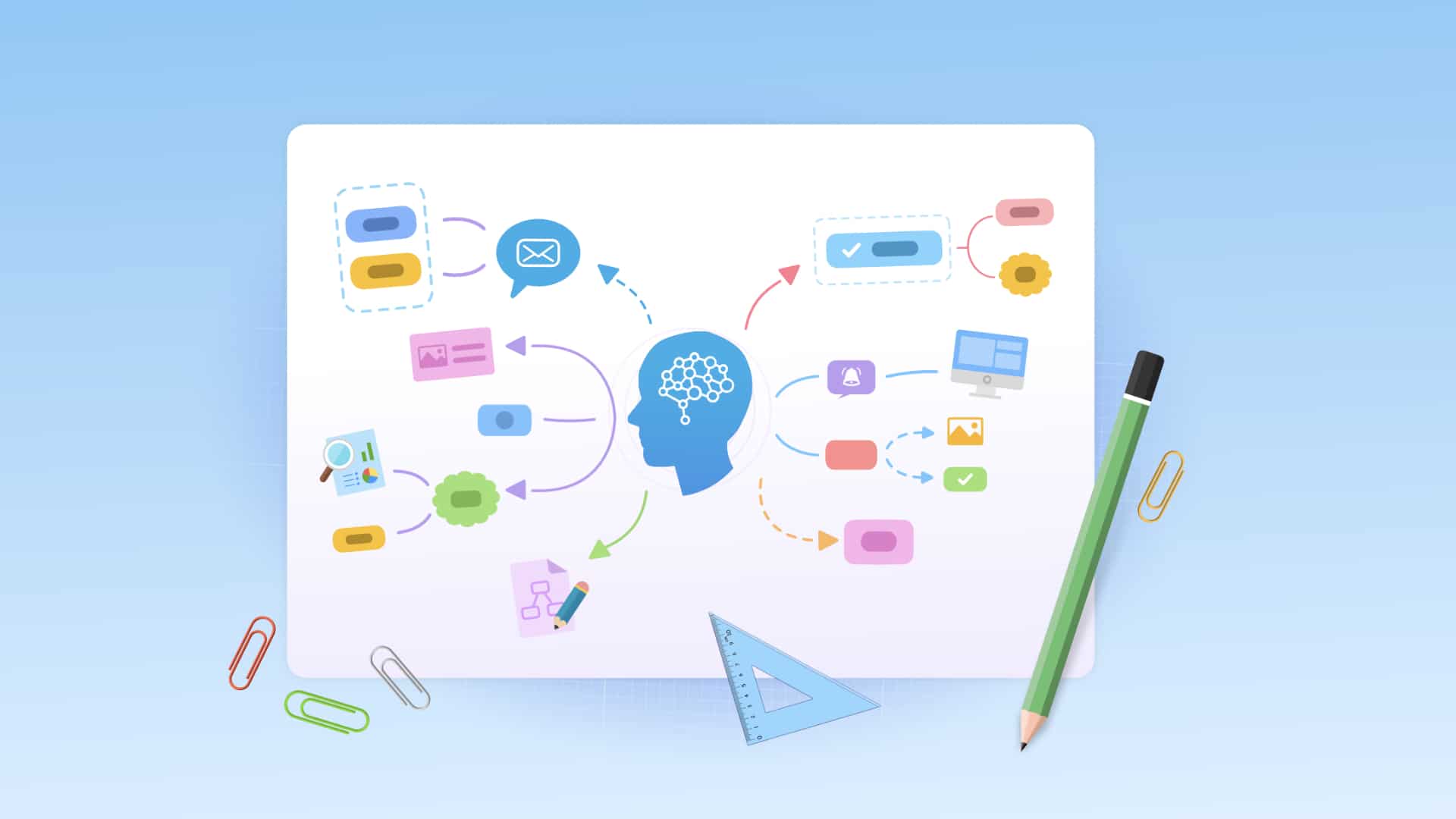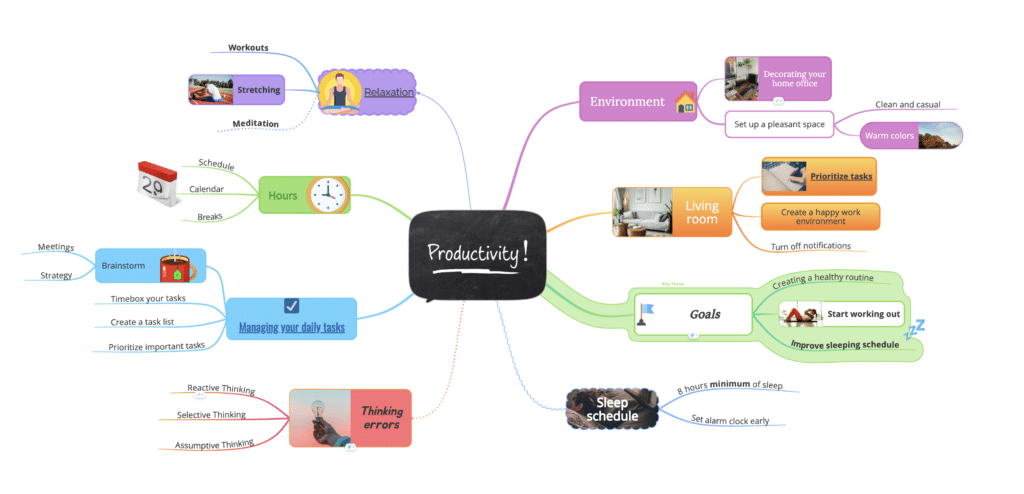August 8, 2024
Capturing your ideas using mind maps

Creativity is born of new ideas. To achieve stratospheric levels of creativity in the workplace you have to be geared up to generate, assimilate and exploit worthwhile ideas on a consistent basis. But, first things first – how do you capture your ideas to begin with?
Catching ideas as they fly out of your mind is of crucial importance to your innovation efforts. It’s a struggle to be fully in command of your creative processes and to realise the value of your ideas if you let them escape! You can lose all sorts of inspirations by failing to note them down. Psychologist Graham Wallas says it best when he tells of a man “who had so brilliant an idea that he went into his garden to thank God for it, and found on rising from his knees that he had forgotten it, and never recalled it.”
Recording your ideas is what sets off the process that takes them from being mere fancies into tangible and feasible possibilities. Ideally you need a ‘hub’ for your thoughts and ideas – a place where they can accumulate, interact and grow productively. I propose that place to be the MIND MAP.
No matter what creative systems and strategies you use, a Mind Map allows you to readily capture and consolidate your ideas in physical form. Mind Maps can range from very simple to all-embracing, and are useful at all levels of the creative process from multiple idea generation to rigorous analysis of alternatives.
Sadly, people don’t use best practice when it comes to Mind Mapping or they believe that they’re Mind Mapping when, in actual fact, they’re doing something else. The term ‘Mind Map’ is regularly applied to map forms such as spider diagrams, flow charts, concept maps and bubble diagrams. These are NOT Mind Maps and work quite differently.
Where Do Ideas Come From?
Your brain is made up of billions of neurons that, during the process of thinking, go firing across your brain in search of new connections. It’s effectively an association machine in which every bit of information, every idea, memory or emotion sparks hundreds and even thousands of associations which can be seen to ‘radiate’ outwards. What’s more, each of these associations also has its own unlimited array of neural connections.
A new idea is simply a ‘network’ of neurons that’s never before been formed. It’s what comes about when neurons explore the multitude of adjacent possible connections they can make in your mind. To create consists of making new combinations of associative elements which are useful…the most fertile will often be those formed of elements drawn from domains which are far apart.
Contrary to standard thought, good ideas hardly ever occur as ‘eureka’ moments or ‘flash’ breakthroughs. In reality, they may take months or even years to culminate and evolve. Rather than being something entirely brand new, an idea is the product of a combination of your existing knowledge or ideas, and those of other people, colliding and fusing together in a new way.
With this understanding, it becomes possible to create an external environment that mimics the interactive way in which the brain connects ideas. By bringing together diverse thoughts and people with different backgrounds and interests, snippets of knowledge and assorted ideas can merge to create entirely new configurations. Ideas that are only part ready can connect into something larger and far more exceptional.

What Exactly is a Mind Map?
Mind Mapping is essentially a technique that emulates, supports and accelerates this ‘dot connecting’ process, allowing us to bring new ideas into being in the most liberating and cohesive way. In a Mind Map, information is structured and recorded in a graphic format that mirrors the expansive behaviour of the brain when it creates connections. This allows us to clearly ‘see’ how our associations can flare into novel and original ideas or solutions. The concept of association is widely believed to be at the heart of any creative act.
Whether we’re working on paper or on a computer, alone or in teams, our thoughts and ideas can be captured, co-ordinated and strengthened with great ease and resourcefulness in a Mind Map. Naturally, this makes it an exceptionally powerful tool for solving complex problems, broadening horizons and improving day-to-day decision making.
A Mind Map is a visual diagram where thoughts, ideas or facts are laid out on branches around a central theme to form an organic, connected structure which ‘radiates’ outwards. It uses lines, key words, colour, space and images all according to simple, brain-friendly concepts. The popularity of the Mind Mapping technique has grown spectacularly in the last few decades and it’s now used by millions globally as an aid in study, organisation, problem solving and decision making.
The Mind Map was invented and popularised by leading author and ‘brain expert’ Tony Buzan in the early 1970s. While at university, he learned that conventional linear methods of taking notes and recording ideas such as lists and outlines make inefficient use of the brain’s powers and can, in actual fact, be very wasteful to the thinking process.
Drawing on breakthrough scientific insights on the brain and the approaches of the great thinkers, scientists and artists of the past, Tony ultimately devised the Mind Map as a credible alternative to our traditional forms of note-taking. By understanding the operational principles of the brain, Tony was able to purposely formulate a tool to complement these principles, and in doing so, could offer us an incredibly practical and positive way to unleash our thinking capacity.
To find out more about how to mind map, see my next post……
Looking for a keynote speaker on mind mapping:
Chris Griffiths is a world-leading expert and keynote speaker on the Mind Mapping process. Chris worked with the inventor of the Mind Map – Tony Buzan, for over two decades, as CEO of both Buzan Online, and ThinkBuzan, and was responsible for expanding the ThinkBuzan Mind Map Instructor Network to over 1000 trainers, coaches and consultants world-wide. For more details contact us
